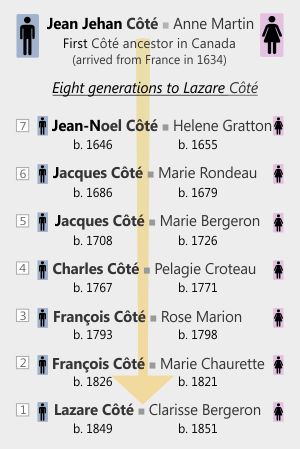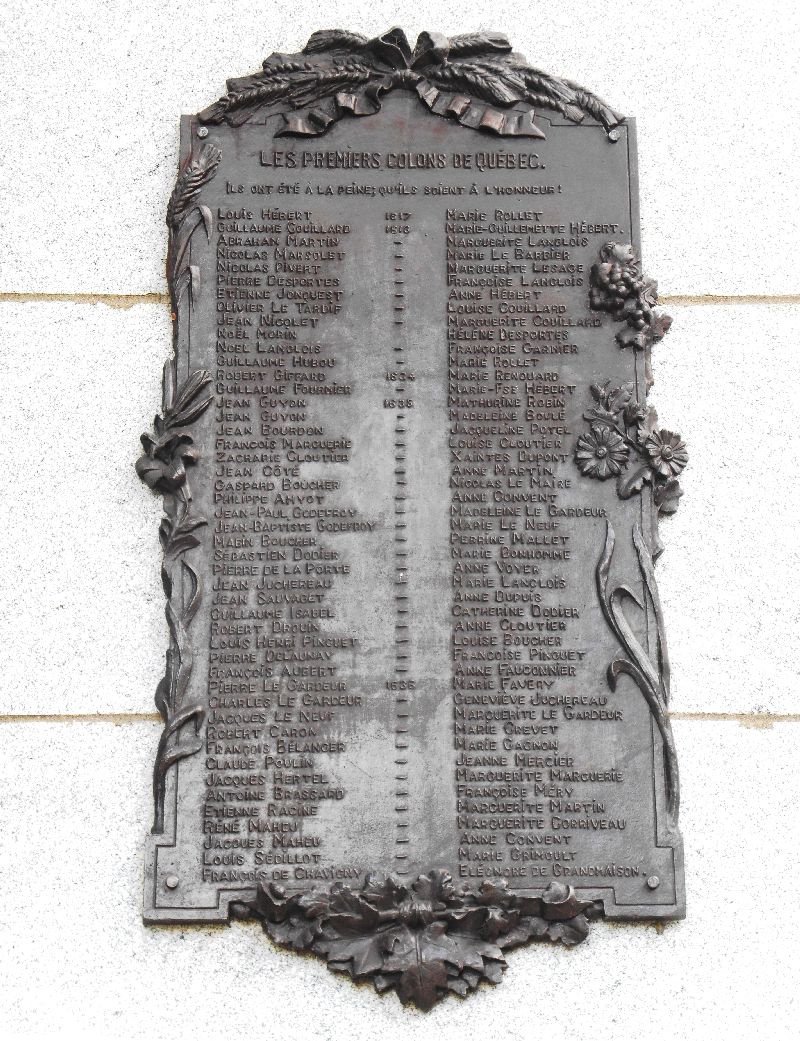Understanding our genealogy
Tom Thievin’s exploration of Louise Côté’s ancestry in 1996 was as naïve as my own. The presumption was that tracing her precise Côté ancestors back to their arrival in Canada would provide a singular trail of her lineage. And even though internet resources were scant at that time, Tom managed to find all 70 relatives who descended to Louise from Jean Jehan Côté, the first Côté to set foot in Canada back in 1634. In reality only nine of these were actually our grandparental ancestors. The remainder were their siblings, not directly related to us since their genes did not become our genes.
But wait. What next becomes obvious is that if every human being has four natural grandparents, it is simple math that 10 generations contain 1,024 ancestors — all equal grandparents of identical significance to subsequent generations, genetically speaking. Only Jean Jehan Côté’s surname endears him to us but little more, since there were actually 255 others in the same generation from whom we descend equally, including nine Filles du Roi. In the following generation there were 128 more grandparents who share identical status, and nine of those were also Filles.
What I’m saying is that I recognize that there were exactly 365 others in those two generations whose ancestral status is equal to the 18 Filles du Roi in the scheme of our existence. Regardless, I focus specifically on our Filles for a reason: Because they are historically recognized, there is far more data available for them than for other ancestors in those years. The FDR were also distinct because stories of their decisions to move to Canada are full of intrigue. These were damned courageous women, and we are eternally indebted! I hope you will see why.

The son-by-son trail from Jean-Jehan, the first Côté who arrived from France in 1634, leading to our family. Clearly seven more generations followed that led to Lazare's generation.
Note generations 1 and 5 where misconceptions can arise from marriages seemingly between cousins, i.e., Bergeron wives. Since the Côté/Bergeron interval is well more than two generations, the latter marriage was not consanguinous.
First, how do we connect Lazare and Clarice to these legendary 18 women? Well, just as Jean Jehan Côté’s offspring led to today’s Côtés through a succession of sons, so equally did the Filles through both sons and daughters of non-Côté surnames. To strengthen (and maybe confuse) the mosaic in generations that transpired along the way, some descendants of Jean Jehan Côté also married descendants of the Filles, thus creating an even more sophisticated portrait of our relativity by the time Lazare and Clarice met and married roughly 200 years later.
In my quest to understand this, I prepared a family tree that begins with the children of Lazare and Clarice Côté. It's really a schematic that is 10 generations deep, that is, it has 10 rings, each showing both parents of every parent of every parent, et cetera, above Lazare and Clarice. To ensure that names are large enough to be legible in outermost rings, the document needs to be printed at least a metre in height and width.
Humanity is a never ending descent from ancestors. Obviously everyone on earth has a pedigree as large as the number of his or her known predecessors. While we have names of earlier ancestors in France, there are few trustworthy details for them. Official records in most European countries are all but silent before the 1600s. We therefore regard the arrival of our own ancestors in Canada as the beginning of our genealogical journey, the establishment of our genes here in North America from about 1630 onward.

Les Premiers Colons de Québec, translated: "The first settlers of Québec"
Jean-Jehan wasn't just the first Côté in Canada. He was also among the first European settlers in the entire country acknowleged by this commemorative plaque in Montreal near the monument of Louis Hébert and Marie Rollet. (Left column, 20th from the top.) The plaque lists the 94 first settlers who undoubtedly had an optimistic vision about the future of the nation. We can only wonder if they would approve of what it has become today.
The creation date of this plaque is unknown, but it might be interesting to modern-day feminists and historical revisionists that the right-hand column lists the wives of every settler, acknowledging them equally for their historic contribution.
